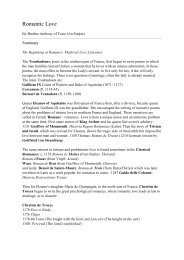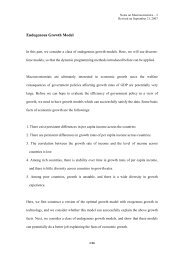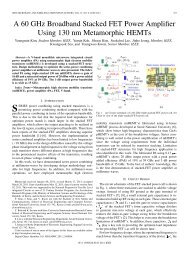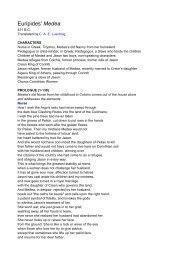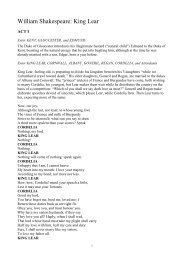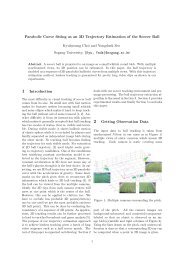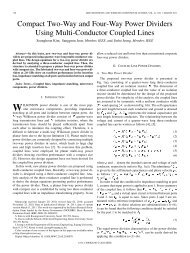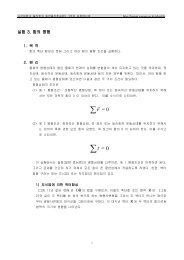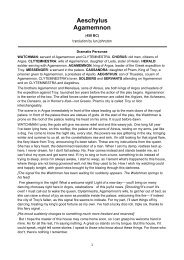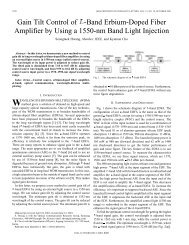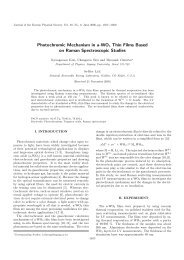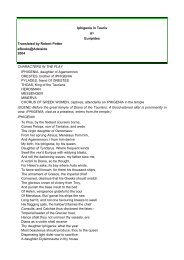THE KOREA REVIEW Volume 1, 1901 Homer B. Hulbert A.M. ...
THE KOREA REVIEW Volume 1, 1901 Homer B. Hulbert A.M. ...
THE KOREA REVIEW Volume 1, 1901 Homer B. Hulbert A.M. ...
Create successful ePaper yourself
Turn your PDF publications into a flip-book with our unique Google optimized e-Paper software.
will surely die that year. To ward off death and lengthen his life, an offering is made at the shrine of<br />
the tutelary god of the region and the collar of his coat is hung up as an indication of his desire and<br />
possibly as a substitutive, offering in his own behalf. The thread and the longer strips of rags are<br />
generally for children and are symbolic of a petition for long life. The coins indicate a petition for<br />
riches, the rice a petition for good crops. The colored rags generally stand for the petition of a bride,<br />
for the Koreans have a superstition that when a bride leaves her father’s house to go to the home of<br />
her husband the household gods all try to go with hen This would mean the speedy destruction of her<br />
father’s household, so at the first altar on the way she petitions them to come no further, but to remain<br />
at this altar and regard her offering as a substitute for herself.<br />
Sometimes there will be found other offerings such as salt, cotton, silk and kindred objects.<br />
These have been offered by merchants dealing in those commodities for success in their trade. [page<br />
22]<br />
Where this custom originated I cannot say. I doubt if a conclusive answer, is possible. It is<br />
part, of the symbolism which is a feature of shamanism, in Korea. The principle underlying it came<br />
along with the cult itself from the ancestral home of the Koreans, wherever that may have been.<br />
Whether from the earliest times, the custom has been one and unchanged I cannot say, but a principle<br />
which gives reins to fancy as this does may have various manifestations in different ages.<br />
G. H. J<br />
Editorial Comment.<br />
The publication of an English magazine in Korea calls for no apology. It was a matter of<br />
deep regret that the editors of the Korean Repository were compelled to suspend its publication, for it<br />
supplied, in excellent form, the material which the public most desired to receive. That no one was in<br />
haste to take up the work they laid down is not surprising for in the first place there is the difficulty of<br />
maintaining an equal degree of excellence and in the second place because the net proceeds of such an<br />
enterprise are entirely esoteric rather than material. Furthermore it must be acknowledged that to most<br />
people Korea is interesting solely as a political problem. Many causes combine to render her deeply<br />
interesting from this point of view; but it is manifestly not the province of such a magazine as this,<br />
published at the Capital of the Empire of which it treats, to enter the political arena. Such discussions<br />
to be of value require the possession of special knowledge which is rightly confined to the realm of<br />
diplomacy and to which the outsider cannot aspire without impertinence. In lands where government<br />
is administered by popular suffrage the freest discussion of such topics is not only admissible but<br />
necessary; but in a country like Korea where the public are not made aware of the causes and springs<br />
of political action such discussion is largely futile. This fact narrows the field of service of such a<br />
magazine to that portion of the reading public who are interested in the Korean people themselves,<br />
their history, custom, laws, arts, [page 23] sciences, religions, language, literature, folklore and<br />
ethnological relations. At the same time we shall attempt to keep a faithful record of events that<br />
transpire in the peninsula, whether they be political or otherwise.<br />
When we remember that the beginning of authentic Korean history antedates, the advent of<br />
Christ and that almost nothing has been done to give this history to the English speaking world; and<br />
when we remember that Korea is a distinct and integral nation separated from all her neighbors by<br />
radical differences both of a temperamental and a linguistic character, we must agree that the<br />
exploitation of this wide field of research is worthy of attention. Something has been done already but<br />
vastly more remains to be done. Folklore has been investigated to some extent but those who have<br />
done the most would be the first to admit that only a beginning has been made. Theories have been<br />
advanced both in Korea and Japan as to the ethnic affinities of the Korean people and while<br />
exhaustive discussion of such themes belongs properly to the Korean Branch of the Royal Asiatic<br />
Society there are numberless collateral and supplementary lines of investigation which could find a<br />
medium of expression in such a magazine at that which is here contemplated.<br />
No record in English of current events in Korea is being kept, to which the general public<br />
can have access. The daily press of China and Japan gives us occasional glimpses but they are<br />
fragmentary and often erroneous in spirit if not in letter. A plain record of these events is of value, if<br />
only for purposes of future reference.




